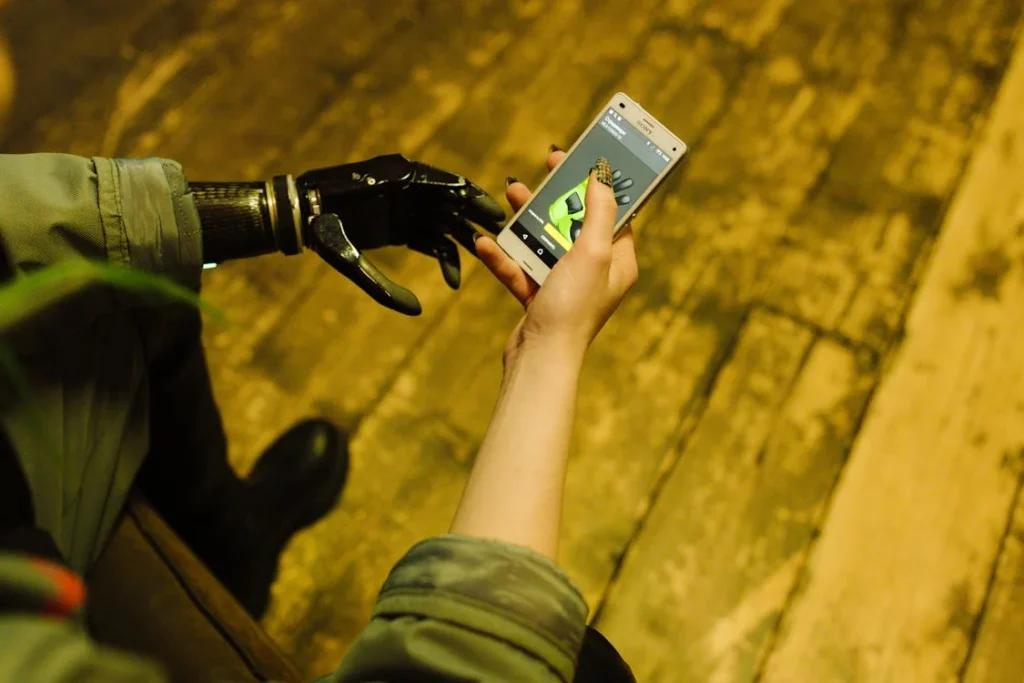Choosing the right prosthetic for a child is a big decision. It’s not just about getting a new hand or leg—it’s about helping them move, play, and live more freely. Parents often find themselves standing between two choices: custom-made prosthetics or prefabricated ones. Both seem helpful, but which one truly fits your child’s needs?
At Robobionics, we’ve worked closely with hundreds of children and families across India. We understand how every child is unique, and so are their prosthetic needs. With our experience in pediatric prosthetics and our work through trusted partners like Omnify Prosthetics, we’ve seen firsthand what works best—and when.
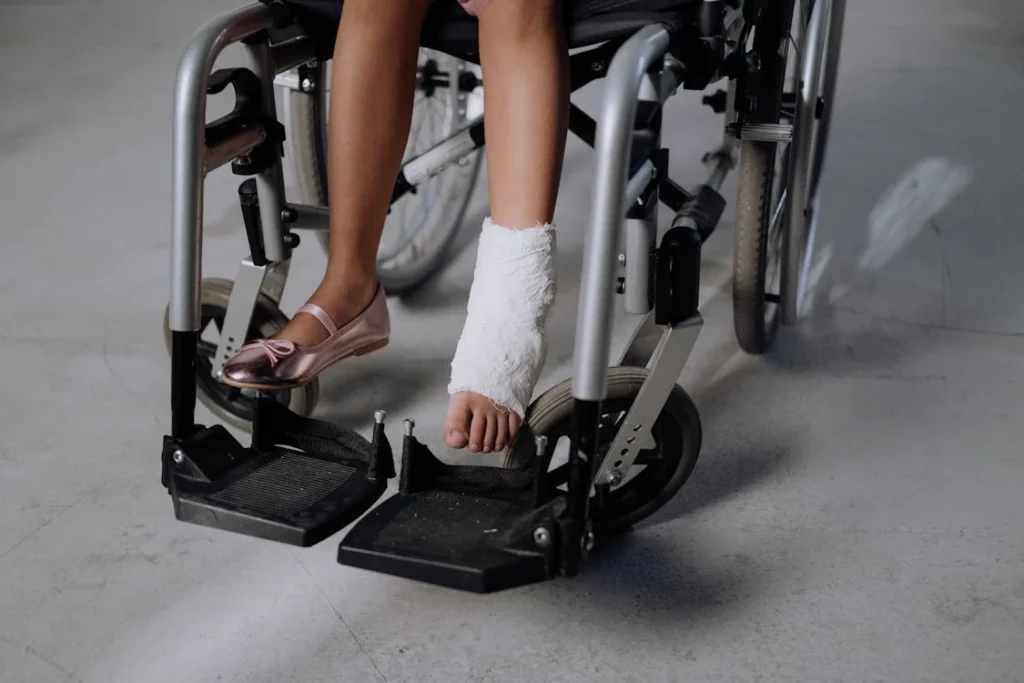
Understanding Pediatric Prosthetics: A Growing Need
Why Pediatric Prosthetics Are Different
When it comes to prosthetics for children, things are very different from adults. Children are constantly growing, learning, and exploring the world. A prosthetic limb for a child isn’t just about function—it’s also about comfort, confidence, and adaptability.
A child’s body changes quickly, and so does their movement, strength, and even how they see themselves. This makes it important to choose a prosthetic that supports not just their body, but also their development.
At Robobionics, we’ve seen how early access to the right prosthetic can change a child’s life. Kids who are fitted with a well-matched prosthetic at the right time often have better balance, better posture, and more independence as they grow.
They can run, write, play, and join in with their friends. More importantly, they feel included. That emotional support is just as important as physical ability.
Prefabricated prosthetics, which are mass-produced, offer a general fit and are often used for quick solutions or in the early stages of limb loss recovery.
On the other hand, custom-made prosthetics are designed specially for the child—based on their limb shape, size, weight, movement habits, and needs. But to understand which is better, it’s important to know how these two options really work.
The Role of Fit and Function
Fit is everything when it comes to pediatric prosthetics. A poor fit can cause discomfort, pressure sores, or even long-term health problems. If a prosthetic is too heavy, it may slow down movement or tire the child quickly.
If it’s too loose, it could slip or cause irritation. This can affect the child’s confidence, making them shy away from wearing it.
Custom-made prosthetics are made using precise measurements and 3D scanning technologies. At Robobionics, our advanced design process ensures that each custom prosthetic, like our lightweight Grippy™ bionic hand, feels natural to the child.
It’s shaped just for them, making it easier to move, wear, and control. This is especially important for children who are learning how to use a limb for the first time. The easier the prosthetic is to use, the quicker they adapt.
Prefabricated limbs, while quicker to deliver, may not always match the child’s body perfectly. They’re built using average sizes and shapes, which means they may need extra padding or adjustments.
These can help for short-term use, but over time, they may not offer the same level of comfort or control.
Everyday Use and Child Behavior
Children are curious, active, and often unpredictable. They don’t sit still, and they shouldn’t have to. A good prosthetic should support their lifestyle—not hold them back.
Custom-made limbs are more likely to allow this kind of freedom because they’re built around the child’s natural movement. Whether it’s climbing stairs, drawing in class, or playing cricket, a well-fitted custom prosthetic gives them the ability to just be a kid.
At Robobionics, we also focus on building a sense of ownership. When a child is involved in the process of designing their prosthetic—choosing the look, colors, or even fun features—it becomes something they’re proud to wear.
It becomes theirs. This emotional connection can make a big difference in how well they use it daily.
Our partner clinics, like Omnify Prosthetics, walk parents and children through this entire journey. From evaluation to trial, and then final fitting, every step is about understanding the child’s life and making the prosthetic a helpful part of it.
We even include home-based gamified rehabilitation so that children can learn in a fun way. This helps them feel more in control and less afraid of their new limb.
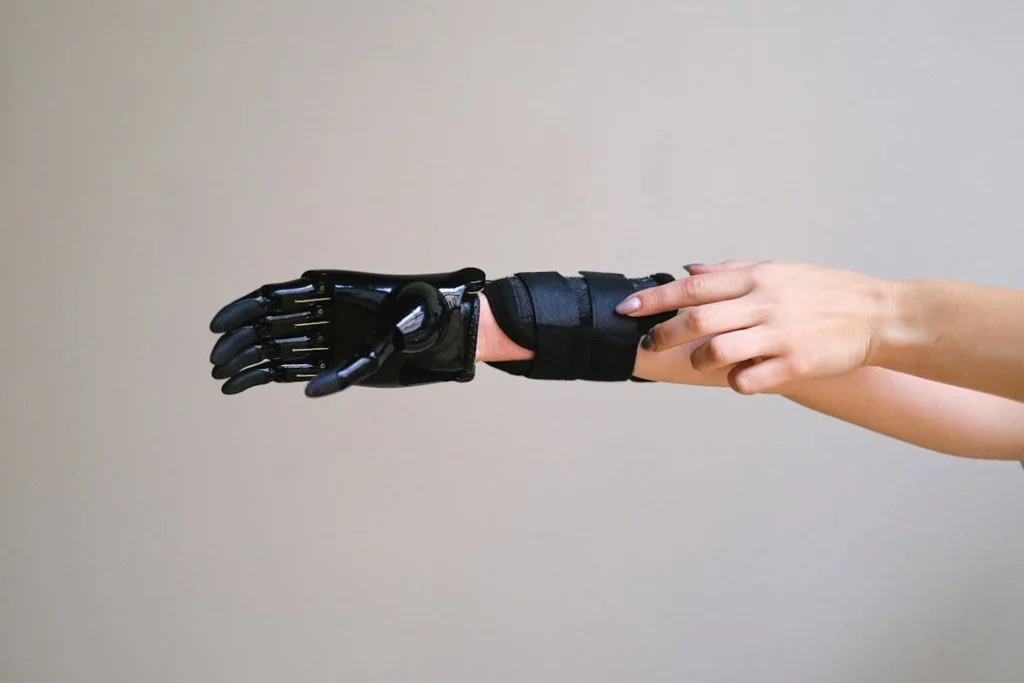
Comparing Custom-Made and Prefabricated Prosthetics in Real Life
How They Are Made and Delivered
One of the first differences between custom-made and prefabricated prosthetics is how they are made and delivered.
Prefabricated prosthetics are manufactured in large numbers using standard molds. They are usually stocked in different sizes and can be quickly given to a child in need.
This can be helpful in emergency situations or when a temporary solution is needed before a final prosthetic is ready. However, the speed of delivery often comes at the cost of comfort and personalization.
Custom-made prosthetics, on the other hand, take time and care to create. At Robobionics, we begin with a detailed evaluation of the child’s limb.
This may include scanning, measurement, and observing their natural movement. We look at how they walk, run, hold things, and even play.
Then, we design the prosthetic from scratch—just for that child. We use lightweight materials, like the ones in our signature Grippy™ bionic hand, and we fine-tune the design to make sure it’s both functional and comfortable.
While this process takes a little longer, the result is a prosthetic that feels more natural. The child doesn’t have to struggle to make it fit their life—the prosthetic already fits their body and their world.
And with regular follow-ups and support, adjustments can be made as they grow.
Support and Maintenance Matter
Children outgrow their clothes, shoes, and even toys quickly. The same goes for prosthetics. That’s why support and maintenance are just as important as the initial fit.
Prefabricated prosthetics may not always come with local repair options or follow-up support, especially if they are imported. This can lead to delays and higher costs when something breaks or stops working properly.
At Robobionics, we believe support should be fast and easy. Our authorized clinics, like Omnify Prosthetics, provide local maintenance services so families don’t have to wait weeks for repairs or adjustments.
We also check in regularly to see how the child is doing, whether they need a size upgrade, or if anything is causing discomfort. This helps prevent bigger problems down the line.
Custom-made prosthetics are also easier to adjust when built with modular parts. For example, if a child needs a stronger grip or more wrist rotation, we can swap out just that part—without replacing the whole limb.
This keeps things affordable and ensures the prosthetic grows with the child, not against them.
Emotional Impact on Children and Families
One of the most important things that often gets overlooked is how the prosthetic makes the child feel. Does it help them feel confident? Can they go to school without feeling different? Do they want to wear it, or do they try to hide it?
Children can be sensitive to how others see them. A well-designed prosthetic can change how they feel about themselves.
Custom-made limbs often have a more natural appearance and can be customized with colors or designs that the child likes.
Some kids choose a superhero look. Others want their favorite color or pattern. This gives them a sense of control and makes them proud to wear their prosthetic.
Prefabricated prosthetics, while functional, may not offer this same level of emotional comfort. Because they’re not personalized, the child may not feel the same connection. It might feel like a medical tool, not a part of them.
At Robobionics, we treat each child as a whole person—not just a medical case. We talk to them, ask about their hobbies, and include them in the process.
This builds trust and confidence, which plays a big part in how well they use the prosthetic. When they feel good about it, they’re more likely to wear it, practice with it, and live freely.
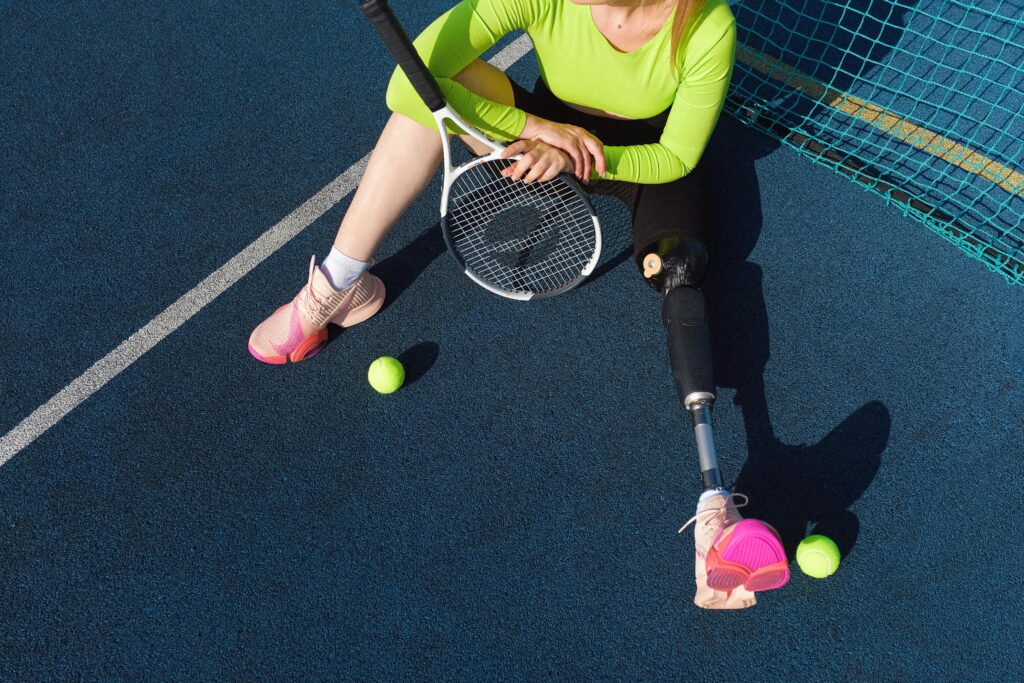
Long-Term Value: What Really Matters for Growing Kids
Adapting to Growth and Change
Children grow fast—faster than we often expect. Their arms and legs grow longer, their strength changes, and their needs shift.
A prosthetic that fits perfectly today may become too tight or too short in just a few months. That’s why flexibility and long-term planning are so important when choosing a prosthetic for a child.
Prefabricated prosthetics, because they come in fixed sizes, often need to be replaced completely as the child grows. This can become costly and time-consuming, especially if replacements are not available locally.
The fit may become uncomfortable over time, or the prosthetic may stop supporting the child’s movement as it should. This can lead to frustration, pain, or even injury.
Custom-made prosthetics are designed with growth in mind. At Robobionics, we make sure our pediatric solutions are adaptable. When we build a custom prosthetic, we think about how it will grow with the child.
Our modular systems allow certain parts to be adjusted or replaced without building an entirely new limb. This helps reduce costs over time and keeps the child comfortable as they grow.
We also track each child’s progress through regular reviews and updates. If a child starts using their hand in a different way, we can adjust grip settings or add new features.
Our Grippy™ bionic hand, for example, can be upgraded to match the child’s strength, movement style, and everyday activities. The goal is to support them not just today, but for years to come.
Learning to Use the Prosthetic
Another key part of choosing the right prosthetic is how easily a child can learn to use it.
Children are fast learners, but they also need time, patience, and support—especially when they’re learning something as complex as using a new limb.
Prefabricated prosthetics usually come with basic functionality. They are often body-powered or passive, meaning they may help with appearance or basic movement but not with complex tasks.
For example, they may allow a child to hold a toy, but not write with a pencil or hold a spoon correctly. Because they’re not built for a specific child’s body or habits, they often require more effort to control.
Some children give up on using them because it feels unnatural or frustrating.
Custom-made prosthetics, especially when they’re myoelectric like Grippy™, use the child’s own muscle signals to control movement.
That means the prosthetic responds to what the child wants to do—whether that’s picking up a block or waving hello. This makes learning faster and more intuitive.
To help with this, Robobionics offers home-based gamified rehabilitation. This is a fun way for children to practice using their prosthetic at home, through interactive games and exercises.
These games help improve control, muscle strength, and confidence. And because it feels like play, not therapy, children enjoy the process. Over time, this improves how well they use their prosthetic in real life.
We work with families to guide them through this journey. Our rehab specialists, along with partners like Omnify Prosthetics, ensure that both the child and the parents know how to use and take care of the device.
This kind of support isn’t always available with off-the-shelf options.
The Bigger Picture: Confidence and Independence
For a child, wearing a prosthetic is not just about movement—it’s about identity. It’s about being able to go to school, play with friends, and feel like they belong.
The right prosthetic can bring a huge boost in self-esteem and independence. Children who are proud of their prosthetic are more likely to use it every day, to stay active, and to explore the world around them.
At Robobionics, we see this transformation every day. A shy child who once avoided eye contact can become a bold, smiling kid who loves showing off their cool, custom-designed bionic hand.
This confidence spills into all areas of life—from schoolwork to friendships to dreams for the future.
Prefabricated prosthetics, while helpful in many cases, often don’t offer this kind of emotional support. They may look plain or feel impersonal.
That’s why we believe in the power of design, personalization, and human connection. Every child deserves a prosthetic that makes them feel strong, capable, and included.
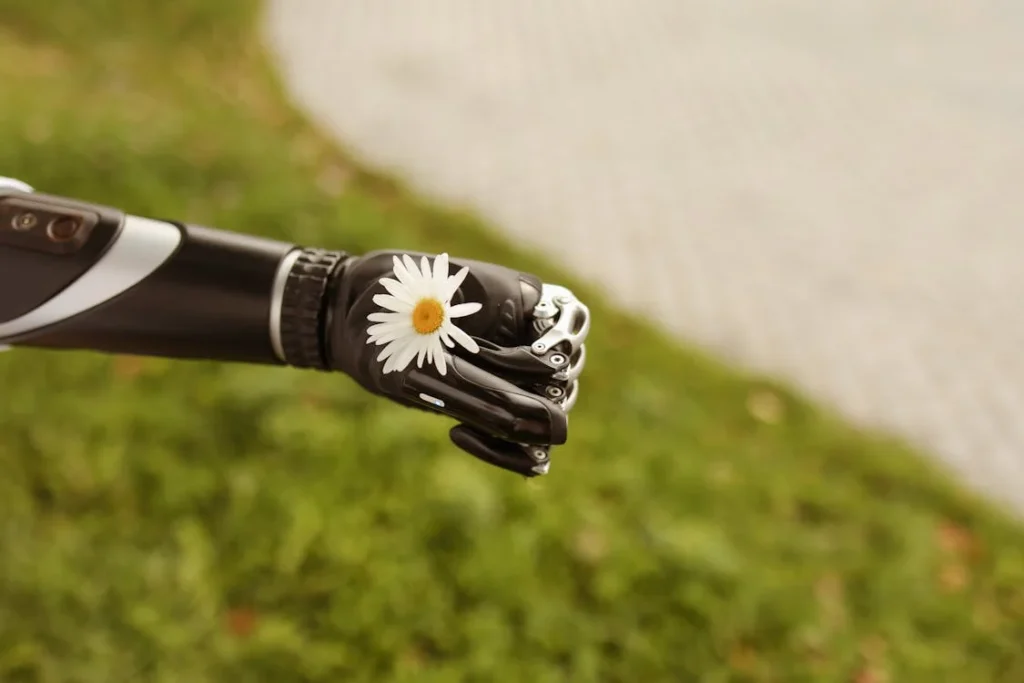
Cost vs. Value: Understanding the True Investment in Pediatric Prosthetics
Affordability and the Hidden Costs
When families begin exploring prosthetic options for their child, one of the first things they often think about is cost. On the surface, prefabricated prosthetics seem like the more affordable option.
They’re often less expensive upfront, and since they’re mass-produced, they’re more widely available. But what many don’t realize is that these initial savings can quickly disappear over time.
Prefabricated limbs may require frequent replacements as the child grows. Since they aren’t made to fit the child’s exact shape or activity level, they may wear out faster or cause discomfort that leads to extra doctor visits, new fittings, or even physical therapy.
Add in the cost of transportation, lost school days, or time off work for parents, and what started as a “cheaper” solution can become surprisingly expensive.
On the other hand, custom-made prosthetics might appear more costly in the beginning, but they often bring greater long-term value.
A well-designed, custom limb fits better, lasts longer, and requires fewer repairs. More importantly, it supports the child’s development, encourages daily use, and reduces the risk of complications. That’s an investment—not just in a product, but in a child’s future.
At Robobionics, we’re deeply aware of how financial stress can affect families. That’s why we’ve committed to creating high-quality, affordable prosthetics made in India, without the huge costs of imports.
Our pricing is transparent, and our prosthetics are backed by local support, so families don’t have to worry about long delays or unexpected expenses down the road.
Insurance, CSR Support, and Inclusive Financing
Another important factor many families are unaware of is financial aid and support. Some hospitals and organizations may offer funding for prosthetics, but these programs often don’t cover imported or prefabricated solutions, or they may limit the child to the most basic models.
Robobionics actively works with CSR-backed initiatives and local healthcare partners to bring pediatric prosthetics within reach for all families.
We also help guide parents through available support programs, so they don’t have to navigate the financial system alone.
From payment plans to institutional support, our goal is to make sure that no child misses out on the prosthetic they truly need—just because of cost.
We also provide extended service packages, where maintenance, repairs, and upgrades are bundled together at a low cost, helping families plan better without worrying about surprise charges.
This level of support is often missing in prefabricated options, especially those bought from overseas sellers who don’t offer ongoing care.
Why Value Matters More Than Price
At the end of the day, the most important question isn’t “What does it cost?” but “What is it worth to your child’s life?”
A prosthetic that’s uncomfortable, hard to use, or quick to break can end up being ignored, no matter how affordable it was. But one that fits well, feels good, and supports the child’s confidence? That’s priceless.
When we design prosthetics at Robobionics, we look beyond the material. We think about what it brings to the child’s everyday life—can they eat on their own, go to school with confidence, or join in games without hesitation? These are the things that truly matter.
Prefabricated prosthetics may fill a short-term need, and for some children, they might be a good first step. But for long-term growth, performance, and peace of mind, custom-made prosthetics usually deliver much more than what’s visible in the price tag.
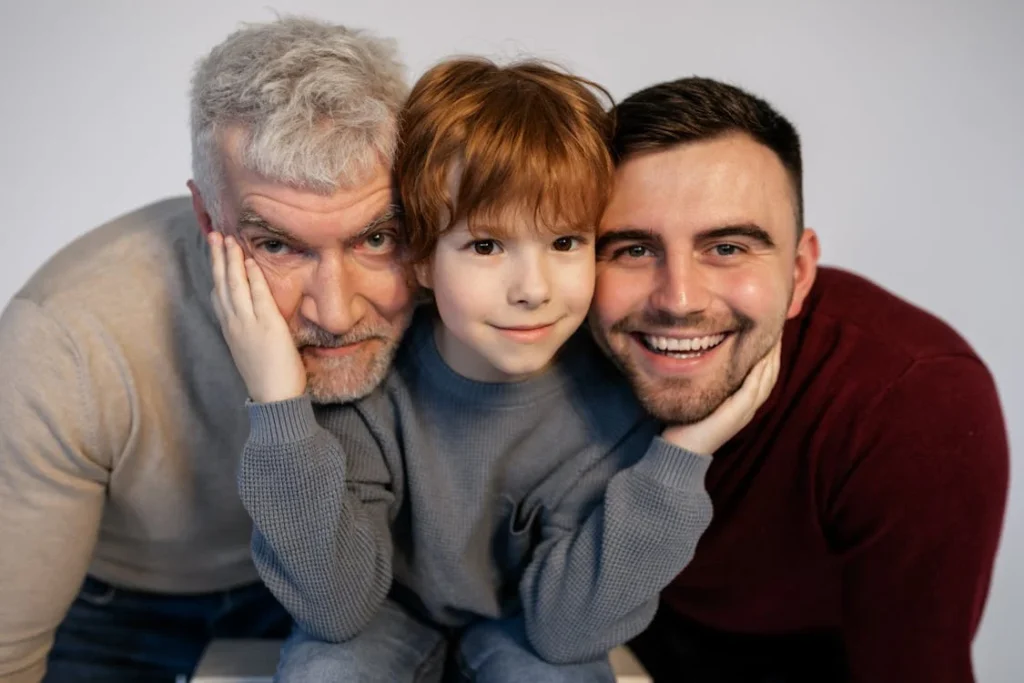
The Power of Parental Involvement in Pediatric Prosthetic Success
Beyond the Device: Building a Support System at Home
A child doesn’t use a prosthetic in isolation. Their success depends heavily on the support they receive at home. Parents are often the first line of encouragement, comfort, and care when a child begins using a prosthetic.
How the family reacts, communicates, and adapts can deeply influence how a child accepts and uses their new limb.
For families choosing between custom-made and prefabricated prosthetics, understanding how involved they’ll need to be—and how supported they’ll be in that journey—is a crucial part of the decision-making process.
Custom prosthetics, like those offered by Robobionics, come with a personalized onboarding experience. From the very first consultation, we make sure parents are not just bystanders—they’re collaborators.
We listen to their concerns, answer their questions in simple language, and make sure they understand how the prosthetic will affect their child’s daily life.
We also teach families how to assist with care routines, check for skin irritation, monitor fit, and encourage daily use through gentle motivation.
This coaching is often missing with off-the-shelf solutions, where the focus is mostly on the device—not on the people surrounding the child.
Emotional Support for Parents and Caregivers
It’s important to acknowledge something that often goes unsaid: parents feel the weight of this journey too.
The emotions of seeing your child face limb loss, making big medical decisions, and dealing with unfamiliar technologies can be overwhelming.
It’s not uncommon to feel doubt, worry, or even guilt—even when you’re doing everything right.
That’s why at Robobionics, we believe in caring for the whole family. Our team doesn’t just focus on the device—we focus on people.
We provide parents with clear, friendly information so they can make smart decisions without feeling confused or rushed.
We offer in-person and virtual support sessions, and we connect families with others who have gone through similar experiences.
This human-first approach often makes custom-made prosthetics more than just a medical tool. It becomes a shared journey between the child, the parents, and the Robobionics care team.
Prefabricated options, while faster to deliver, often lack this layer of emotional and educational support.
We’ve seen time and time again how empowered, educated parents raise more confident, independent prosthetic users.
When the family understands the why and how behind the prosthetic, they become true partners in progress.
Reframing the Narrative Around Disability at Home
Another major benefit of deep family involvement is the ability to shift how disability is seen within the home. Instead of seeing the prosthetic as a limitation, it becomes a symbol of strength, adaptability, and innovation.
When parents talk positively about the prosthetic, involve the child in care routines, and celebrate small wins, they help build a mindset of possibility.
This culture of empowerment can make all the difference. Children pick up on how their parents feel. When they see pride and positivity in your eyes, they start to feel that same pride in themselves.
We’ve designed our entire approach at Robobionics to include parents, because we know the journey isn’t just physical—it’s emotional, mental, and social.
We believe families deserve the same attention as the technology, because technology alone doesn’t change lives—people do.
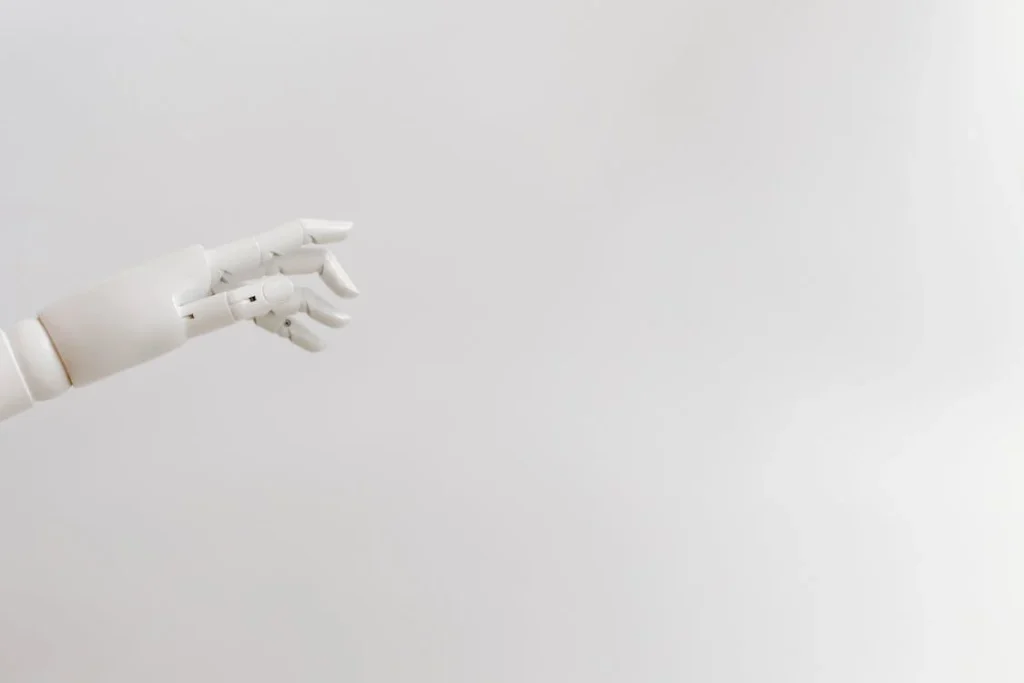
Early Intervention and Development: Why Timing Matters More Than You Think
The Brain-Body Connection in Young Children
During early childhood, the brain is at its most adaptable. This period is known as “neuroplasticity,” which means the brain is rapidly building new connections based on what the child sees, feels, and does.
When a child starts using a prosthetic early in life—especially one that fits well and is easy to control—their brain starts to recognize that limb as part of their body.
This is one of the most powerful benefits of custom-made pediatric prosthetics. Because they’re designed for the child’s exact body shape, muscle strength, and comfort level, they feel more natural and easier to use.
The child’s brain begins to treat the prosthetic like a real part of their body, improving coordination, reaction time, and problem-solving skills.
On the other hand, prefabricated prosthetics may delay this process. If the limb doesn’t fit well or feels awkward, the child might resist using it.
The brain doesn’t get the same feedback from movement, and over time, it may “ignore” the prosthetic altogether.
This could lead to poor muscle development on the affected side, imbalance in posture, or difficulty with fine motor skills like writing or tying shoelaces.
At Robobionics, we’ve seen children who started with our Grippy™ bionic hand at a young age show faster learning and smoother control.
They grow up using both arms naturally, which supports everything from school performance to self-care skills.
Impact on School Readiness and Social Skills
Children don’t just learn motor skills in their early years—they also develop confidence, communication, and social habits.
When a child can participate in activities like coloring, eating lunch with classmates, or playing a group game, they feel included. This builds self-esteem and makes them more eager to learn and engage with others.
Custom prosthetics help support these important moments. When a prosthetic is designed for precision and comfort, a child is more likely to use it for everyday tasks.
They become more independent, which gives them a strong sense of pride and ability. Whether it’s opening a lunchbox or writing their name on a worksheet, small victories add up to a big difference in how they feel about themselves.
Prefabricated limbs, if not well suited to the child’s needs, can lead to avoidance. The child may struggle with basic tasks, which can lead to frustration or embarrassment.
Over time, they may become more withdrawn or avoid certain activities—not because they aren’t capable, but because they aren’t supported by the right tools.
We believe every child should have the chance to grow and learn without limits. That’s why we design every Robobionics prosthetic with real life in mind—not just function, but freedom.
Boosting Long-Term Learning and Adaptive Behaviors
Early exposure to prosthetics doesn’t just help with movement—it teaches problem-solving and adaptive behavior. Children who use prosthetics early tend to develop strong resilience.
They learn how to do things differently, how to adjust, and how to keep trying even when something feels hard. These are life skills that stay with them forever.
With custom prosthetics, children can explore their abilities at their own pace. They’re not held back by discomfort or confusion.
They can focus on exploring their environment, discovering what they can do, and learning how to overcome small challenges independently.
This kind of growth sets the foundation for success later in life. Whether it’s doing well in school, joining a sports team, or taking on new hobbies, kids who start early with the right prosthetic support are often more adaptable, confident, and motivated.
At Robobionics, we work closely with parents and therapists to track developmental milestones and provide timely upgrades as the child grows.
We don’t just fit a limb and walk away—we stay involved to ensure the prosthetic continues to support the child’s physical and mental development as they grow.
Conclusion
Choosing between custom-made and prefabricated pediatric prosthetics is more than a medical decision—it’s a decision about your child’s future. While prefabricated options may offer a quick start, custom-made prosthetics provide lasting value, comfort, and support for growth, learning, and confidence.
At Robobionics, we believe every child deserves a prosthetic that fits not just their body, but their personality, dreams, and daily life. Our Grippy™ bionic hand, along with our full range of pediatric solutions, is designed with care, precision, and purpose—to empower, not just assist.
We stand beside you every step of the way, offering personalized demos, gamified rehabilitation, and fast, local support through partners like Omnify Prosthetics.
Ready to take the next step? Book a free demo with Robobionics today and experience the difference a custom-fit prosthetic can make.
Your child’s journey to independence starts here.



